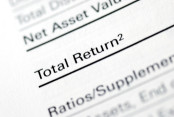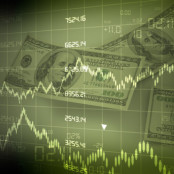
Dividend Investing Ideas Center
Critical Facts You Need to Know About Preferred Stocks
Have you ever wished for the safety of bonds, but the return potential...
















Name
As of 07/25/2024Price
Aum/Mkt Cap
YIELD
Exp Ratio
Watchlist
YTD Return
14.4%
1 yr return
10.4%
3 Yr Avg Return
7.9%
5 Yr Avg Return
8.6%
Net Assets
$767 M
Holdings in Top 10
72.0%
Expense Ratio 0.85%
Front Load N/A
Deferred Load N/A
Turnover 0.00%
Redemption Fee N/A
Standard (Taxable)
N/A
IRA
N/A
Fund Type
Exchange Traded Fund
Name
As of 07/25/2024Price
Aum/Mkt Cap
YIELD
Exp Ratio
Watchlist
| Period | DBMF Return | Category Return Low | Category Return High | Rank in Category (%) |
|---|---|---|---|---|
| YTD | 14.4% | -7.4% | 14.6% | 17.02% |
| 1 Yr | 10.4% | -16.1% | 36.5% | 32.26% |
| 3 Yr | 7.9%* | -7.9% | 13.3% | N/A |
| 5 Yr | 8.6%* | -5.3% | 10.0% | N/A |
| 10 Yr | N/A* | -2.4% | 4.3% | N/A |
* Annualized
| Period | DBMF Return | Category Return Low | Category Return High | Rank in Category (%) |
|---|---|---|---|---|
| 2023 | -11.5% | -16.4% | 12.9% | 53.76% |
| 2022 | 12.8% | -9.3% | 17.5% | N/A |
| 2021 | 0.9% | -25.8% | 2.2% | N/A |
| 2020 | 0.9% | -5.1% | 21.0% | N/A |
| 2019 | N/A | -20.3% | 4.6% | N/A |
| Period | DBMF Return | Category Return Low | Category Return High | Rank in Category (%) |
|---|---|---|---|---|
| YTD | 14.4% | -7.4% | 14.6% | 11.70% |
| 1 Yr | 10.4% | -20.3% | 36.5% | 24.73% |
| 3 Yr | 7.9%* | -9.0% | 11.1% | N/A |
| 5 Yr | 8.6%* | -5.7% | 8.7% | N/A |
| 10 Yr | N/A* | -2.4% | 4.3% | N/A |
* Annualized
| Period | DBMF Return | Category Return Low | Category Return High | Rank in Category (%) |
|---|---|---|---|---|
| 2023 | -8.9% | -16.4% | 12.9% | 53.76% |
| 2022 | 21.5% | -9.3% | 17.5% | N/A |
| 2021 | 11.4% | -20.3% | 2.5% | N/A |
| 2020 | 1.8% | -5.1% | 21.0% | N/A |
| 2019 | N/A | -20.3% | 6.7% | N/A |
| DBMF | Category Low | Category High | DBMF % Rank | |
|---|---|---|---|---|
| Net Assets | 767 M | 2.12 M | 1.74 B | 71.28% |
| Number of Holdings | 12 | 3 | 876 | 76.60% |
| Net Assets in Top 10 | 675 M | -100 M | 2.04 B | 77.66% |
| Weighting of Top 10 | 72.04% | 20.3% | 94.0% | N/A |
| Weighting | Return Low | Return High | DBMF % Rank | |
|---|---|---|---|---|
| Cash | 93.04% | -687.11% | 117.03% | 48.94% |
| Other | 6.96% | 0.00% | 58.63% | 89.36% |
| Stocks | 0.00% | -1.78% | 72.26% | 5.32% |
| Preferred Stocks | 0.00% | 0.00% | 0.13% | 34.04% |
| Convertible Bonds | 0.00% | 0.00% | 2.27% | 45.74% |
| Bonds | 0.00% | -50.36% | 717.59% | 69.15% |
| DBMF Fees (% of AUM) | Category Return Low | Category Return High | Rank in Category (%) | |
|---|---|---|---|---|
| Expense Ratio | 0.85% | 0.75% | 12.88% | 96.77% |
| Management Fee | 0.85% | 0.65% | 2.99% | 5.32% |
| 12b-1 Fee | 0.00% | 0.00% | 1.00% | N/A |
| Administrative Fee | N/A | 0.09% | 0.45% | N/A |
| DBMF Fees (% of AUM) | Category Return Low | Category Return High | Rank in Category (%) | |
|---|---|---|---|---|
| Front Load | N/A | 3.50% | 5.75% | N/A |
| Deferred Load | N/A | 1.00% | 5.00% | N/A |
| DBMF Fees (% of AUM) | Category Return Low | Category Return High | Rank in Category (%) | |
|---|---|---|---|---|
| Max Redemption Fee | N/A | 1.00% | 1.00% | N/A |
Turnover provides investors a proxy for the trading fees incurred by mutual fund managers who frequently adjust position allocations. Higher turnover means higher trading fees.
| DBMF Fees (% of AUM) | Category Return Low | Category Return High | Rank in Category (%) | |
|---|---|---|---|---|
| Turnover | 0.00% | 0.00% | 198.00% | 7.14% |
| DBMF | Category Low | Category High | DBMF % Rank | |
|---|---|---|---|---|
| Dividend Yield | 3.50% | 0.00% | 0.00% | 28.72% |
| DBMF | Category Low | Category High | Category Mod | |
|---|---|---|---|---|
| Dividend Distribution Frequency | Quarterly | Annually | Quarterly | Annually |
| DBMF | Category Low | Category High | DBMF % Rank | |
|---|---|---|---|---|
| Net Income Ratio | -0.93% | -3.14% | 1.55% | 52.69% |
| DBMF | Category Low | Category High | Capital Mode | |
|---|---|---|---|---|
| Capital Gain Distribution Frequency | Annually | Annually | Annually |
| Date | Amount | Type |
|---|---|---|
| Jun 27, 2024 | $0.254 | OrdinaryDividend |
| Mar 26, 2024 | $0.157 | OrdinaryDividend |
| Dec 27, 2023 | $0.750 | OrdinaryDividend |
| Dec 28, 2022 | $2.247 | OrdinaryDividend |
| Dec 30, 2021 | $2.677 | OrdinaryDividend |
| Dec 29, 2020 | $0.081 | CapitalGainShortTerm |
| Dec 29, 2020 | $0.121 | CapitalGainLongTerm |
| Mar 27, 2020 | $0.017 | OrdinaryDividend |
| Dec 27, 2019 | $0.036 | OrdinaryDividend |
| Dec 27, 2019 | $0.901 | CapitalGainShortTerm |
| Dec 27, 2019 | $1.352 | CapitalGainLongTerm |
| Sep 27, 2019 | $0.047 | OrdinaryDividend |
| Jun 27, 2019 | $0.030 | OrdinaryDividend |
Start Date
Tenure
Tenure Rank
May 07, 2019
3.07
3.1%
Andrew Beer has served as Co-Portfolio Manager for the Beachhead Dynamic Beta strategies since the inception of the firm. Mr. Beer is also the Chief Executive Officer of Beachhead Capital Management.
Start Date
Tenure
Tenure Rank
May 07, 2019
3.07
3.1%
Mathias Mamou-Mani has served as Co-Portfolio Manager for the Beachhead Dynamic Beta strategies since the inception of the firm. Mr. Mamou-Mani is also the Chief Operating Officer and Head of Risk at Beachhead Capital Management.
| Category Low | Category High | Category Average | Category Mode |
|---|---|---|---|
| 0.16 | 14.09 | 5.41 | 5.06 |

Dividend Investing Ideas Center
Have you ever wished for the safety of bonds, but the return potential...

Dividend Investing Ideas Center
If you are reaching retirement age, there is a good chance that you...

Dividend Investing Ideas Center
If you are reaching retirement age, there is a good chance that you...

